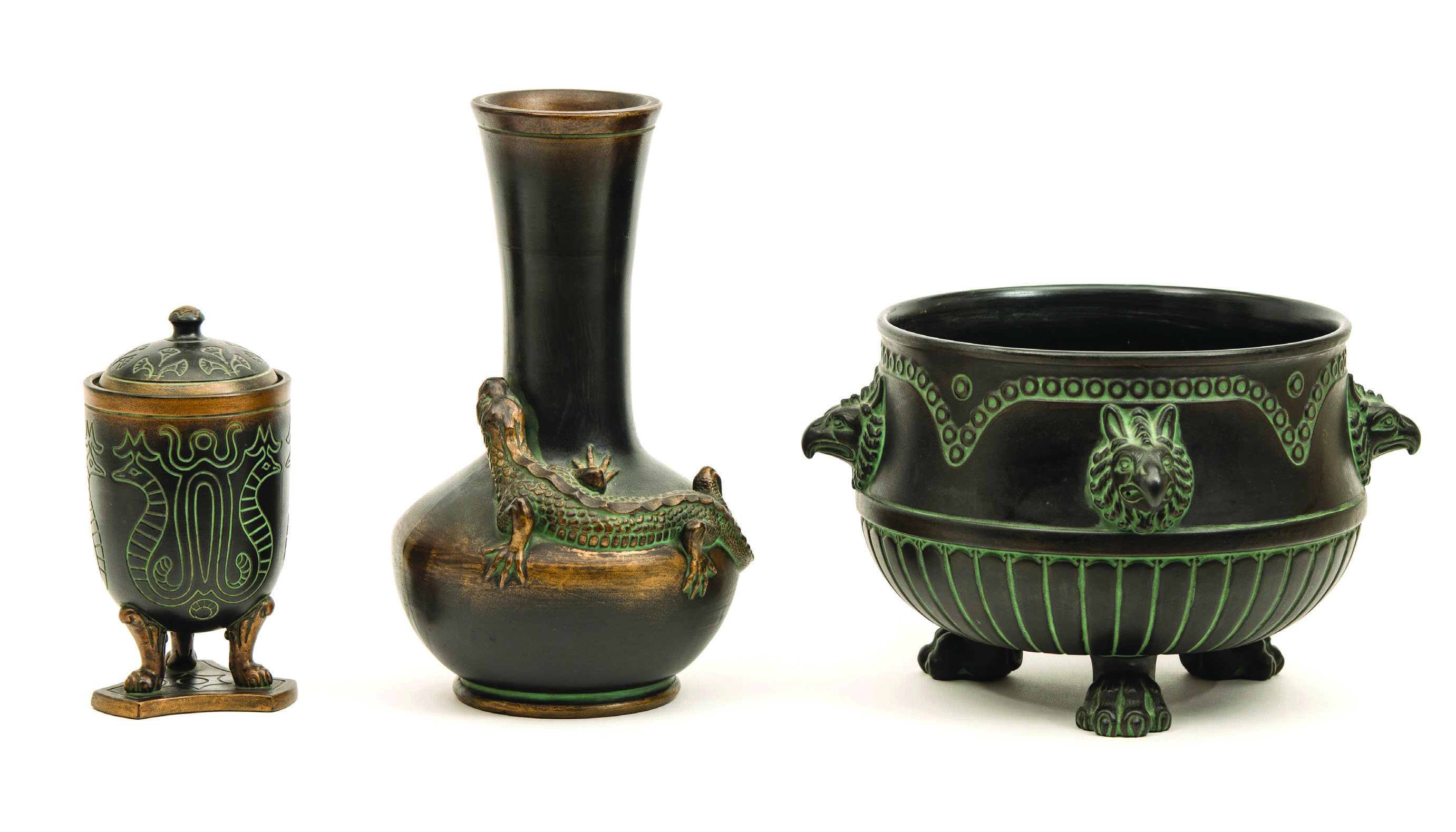Item Composition
Other
Item Medium
Earthenware; Pottery
Item Origin
Rockford, Illinois
Item Duration at Mansion
Temporary
Summary
Glazed earthenware, 6 × 4 inches, Glazed earthenware, 12 ½ × 7 1⁄8 inches, Glazed earthenware, 8 × 12 inches. Collection of John Danis.
Item Composition
Other
Item Medium
Earthenware; Pottery
Item Origin
Rockford, Illinois
Item Duration at Mansion
Temporary
"Not only new to Rockford, but new to all America," declared a local news-paper reporter visiting the city's Norse Pottery in 1905. "The cardinal idea of the line is the reproduction of the forms and decorations of antique bronze, found in exhumations of the old Norse and Greek arts," he explained, noting "the appearance of the work is that of old bronze, after exhumation from long hidden places in the earth, the cutting of the figures being colored with the effects of verdigris."
With forms so old that they were new, Norse Pottery's distinctive wares—most incised with complex knotwork or geometric tracery, others ornamented with lizards or gripping beasts—were translations of ancient bronze relics excavated in Denmark, Norway, and Sweden. To preserve the semblance of the originals, the redware bodies were rubbed with a black pigment stain, then antiqued with light green, and highlighted with gold. Most forms were classic, but some were new shapes like plant stands or tobacco jars incised with ferns, oak leaves, grapes, or other "modern effects." A few were examples of Greek or Egyptian art.
The unique "Nordic flavor" designs were the work of Thorvald P. A. Samson (1873-1947) and Louis Ipsen (Ipson) (1870-1940), two professionally trained potters from Denmark who immigrated to Edgerton, Wisconsin, to work for Pauline Pottery in 1891. They produced terra-cotta busts and figurines at their own American Art Clay Works for a few years before establishing the Norse Pottery Works in 1903. As its sole employees, the men manufactured, designed, and decorated each piece. They moved to Rockford when Arthur W. Wheelock, owner of a large retail and wholesale crockery store, agreed to underwrite the operation and market its products.
Chartered as Norse Pottery Company in 1904 with Wheelock as majority owner, the new Rockford enterprise operated in a well-equipped building with two kilns, using clay drawn from the west
bank of the Rock River. Samson and Ipsen, who functioned as designers and mold makers, supervised employees drawn from the city's large Scandinavian population. At first, the pottery was sold principally through Wheelock's stores; later, agents marketed it throughout the Midwest. A large catalogue, The Story of Norse Pottery, illustrated 113 pieces and explained the origin of each design.
Starting with only a dozen models in 1904, the pottery was offering 129 different designs by the time it ceased production in 1913. By then, Samson and Ipsen had left the company. Norse pottery continued to be sold through 1917, when Wheelock retired from the crockery business.
Item Composition
Other
Item Medium
Earthenware; Pottery
Item Origin
Rockford, Illinois
Item Duration at Mansion
Temporary


